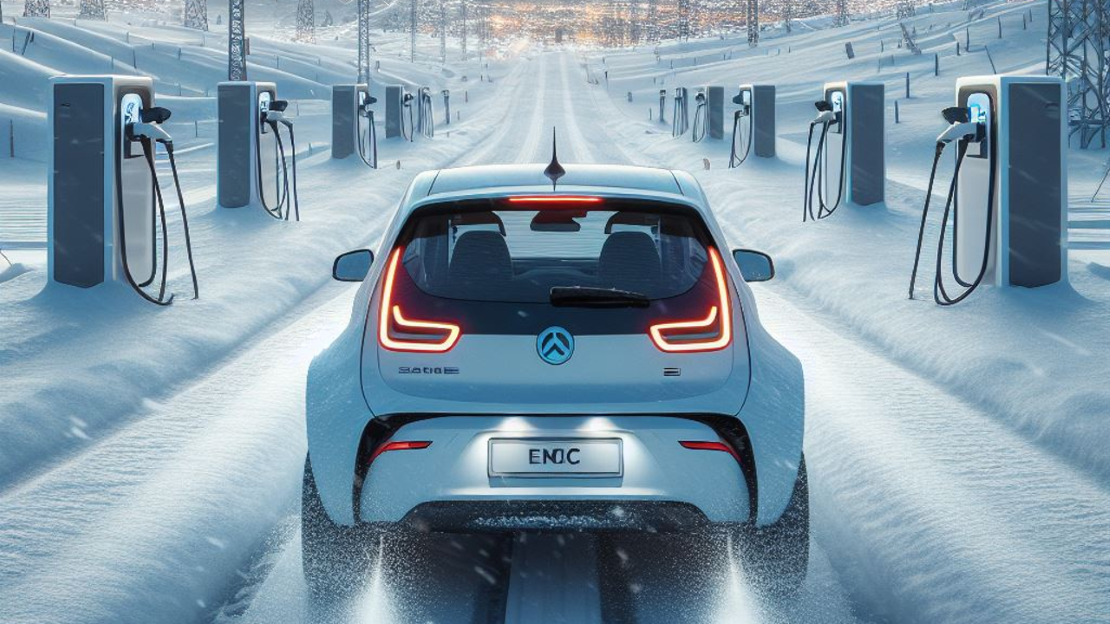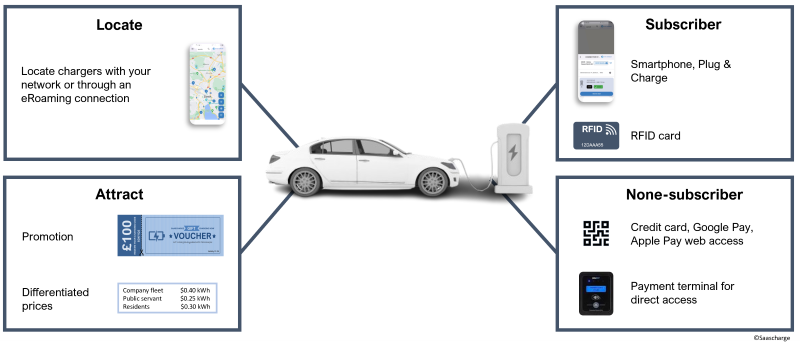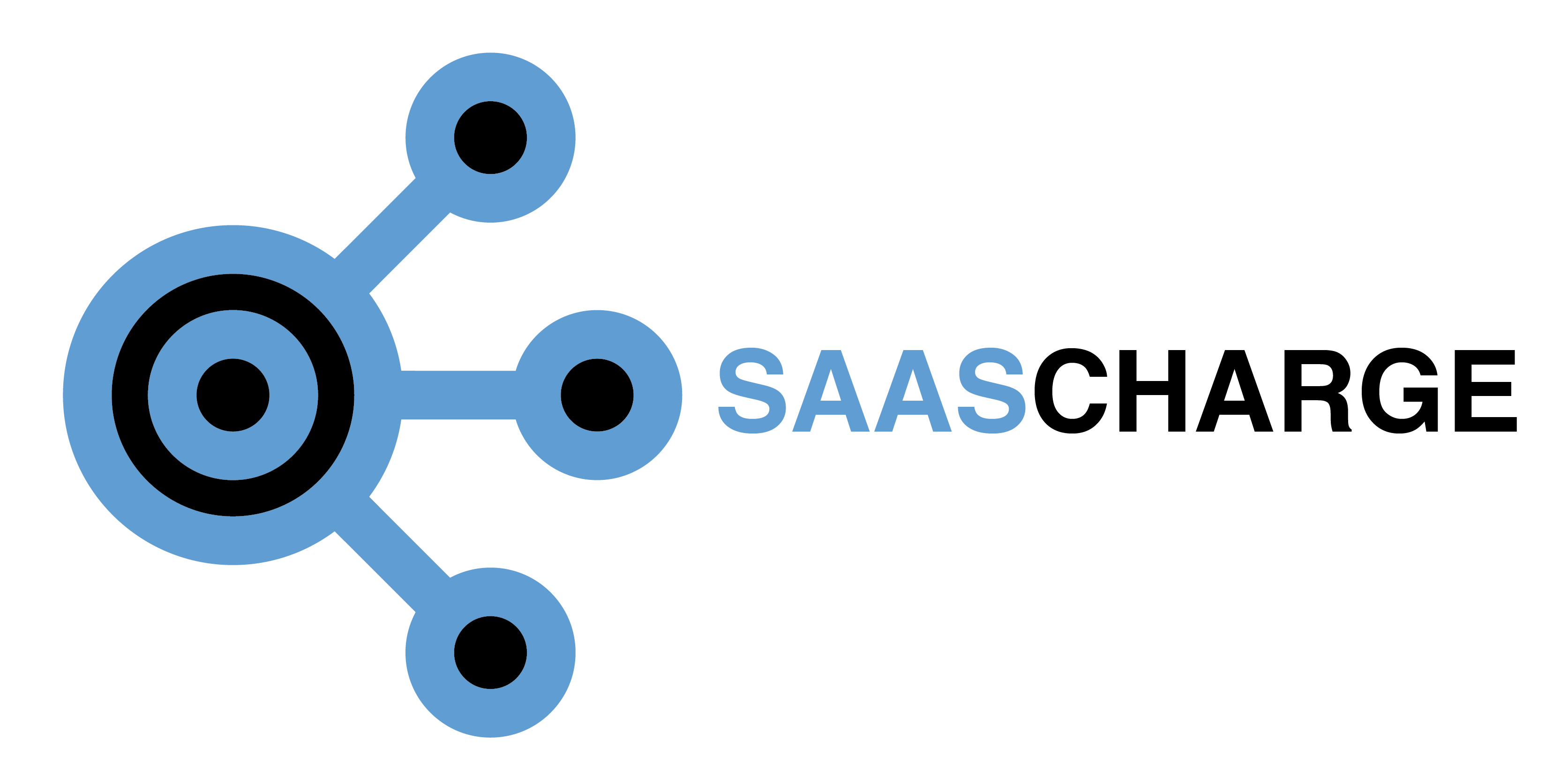
As announced at ICNC 2023, the EV charging market is entering a new phase characterized by increased profitability, shifting away from endless investments with no near-term market return. According to the latest WRI report, global sales of electric vehicles are nearing 10 to 80%, signaling that we are entering a transformative phase.
From the perspective of the EV charging network, we are entering a scaling phase where the number of charging points and transactions are crucial. We believe that achieving this scale requires offering the best service, attractive prices, and a healthy cost base. Regarding products, while we acknowledge the need for more intelligence in energy management, we also recognize that it remains a commodity. Therefore, the focus is on products that drive transactions. In this context, here are our commercial trends for 2024.
1. More access and payment mean greater availability!
A charging station located in a public area should be accessible to anyone, much like an ATM is available to any debit card holder. In the EV charging world, accessibility entails providing contactless payment methods for non-subscribers or, for subscribers, using your network or another network through eRoaming. Direct payment methods without registration are crucial, especially in some US states or countries such as the UK or Germany.

QR – Web-based payment
Scan a QR code, add your credit card, Google Pay, or Apple Pay on a webpage, and click ‘Start Charge.’ This straightforward QR web direct payment method eliminates the need for registration. It is a low-cost solution with no maintenance fees, making it ideal for guest parking areas.
Payment terminal
The physical payment terminal is operated by payment software and facilitates contactless payments through NFC technology. This solution, offered by companies like Payter or Nayax, has been widely embraced by numerous charging station Original Equipment Manufacturers (OEMs). While it is a recognized consumer solution, it comes with a significant cost both in terms of acquisition and maintenance, similar to Level 2 chargers. However, it proves most effective for DC Super-fast chargers (DCSFC)
Plug and charge – ISO 15118
The plug and charge principle, well-known for Tesla super-fast chargers, is now accessible across all networks through the ISO 15118 standard. Simply plug in your car, start charging, and your account will be credited automatically. The key principle involves integrating the network subscription within the car through a smart contract, enabling recognition of the EV driver in any network. This integration necessitates alignment among the car, the charger, and the operating network (CPO and EMP). As seamless as making a phone call, this method represents the future of EV charging!
2. Dynamic Pricing, Load Pricing to Stimulate Charging Events
Load management is a complex process that necessitates behavioral changes in charging practices. Rather than imposing strict capacity restrictions, we believe that optimizing load is best achieved through incentivizing when to charge. This involves introducing dynamic pricing models that vary based on both time and power consumption.”
EV Driver load pricing, the ‘pay for what you need’ principle
This feature enables offering EV drivers various prices for different charging capacities, allowing users to pay a premium for full power instead of waiting with lower power. For instance, if you’re planning an extended trip and need your car fully charged overnight, you may choose to pay more for a full 11 or 22 kW, while other residents might prefer the lowest tariffs for their daily commute. The concept is to assign value to the power output.
Dynamic pricing
This function aims to provide varied prices based on the grid capacity. When the electricity network has surplus capacity, a lower price will be offered. Conversely, during periods of limited capacity, higher prices will be applicable. This approach encourages EV drivers to adjust their charging behavior, thereby supporting the capacity of the electricity grid. It represents a win-win solution for all parties involved: EV drivers, charging networks, and grid operators.
3. Advertising & Promotion – Attracting EV Drivers to Your Locations
The success of public/commercial chargers’ business model hinges on maximizing EV transactions. This goal can be accomplished by promoting your network through special prices and commercial offerings.
Attract EV Drivers to Your Location with Advertising
For retailers, restaurants, hotels, and other commercial establishments, charging infrastructure presents a valuable opportunity to draw customers to their premises. Charging vouchers, coupled with other promotions such as coffee or meal discounts, serve as tools to guide customers to choose their charging locations over others, as discussed in this article. We develop geo-advertising tools to promote their locations through advertisements on both their smartphone applications and the screens of their charging stations
Let’s shift gears and gear up for the hockey stick growth!
The key to supporting this surge lies in delivering the right charging services, propelling revenues and growth to new heights. At Saascharge, we are looking forward to working together towards this objective.
